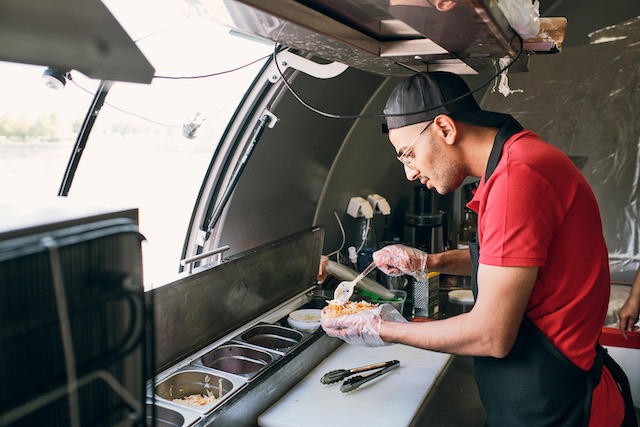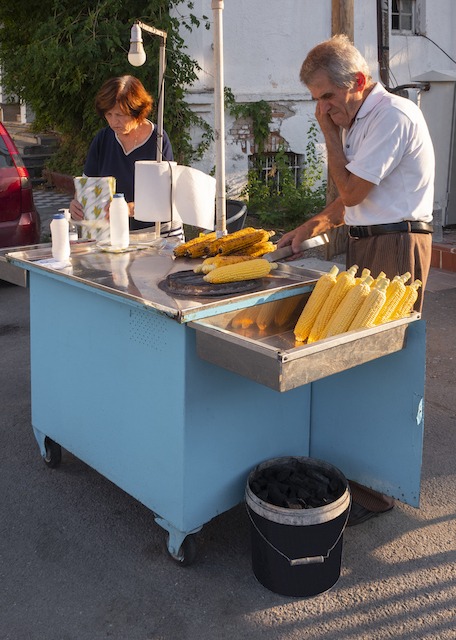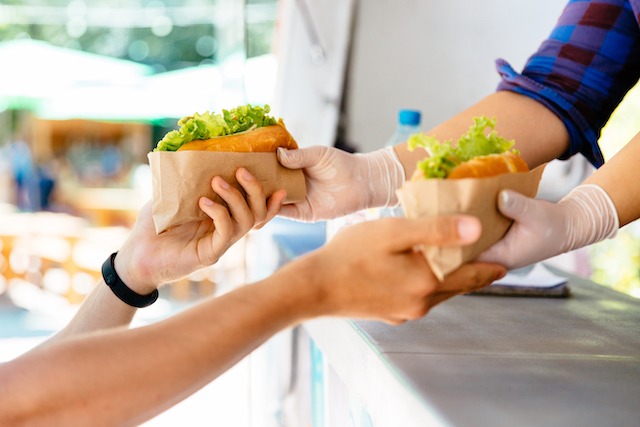
Eating food made on mobile food facility businesses must be safe but it is challenging because of the characteristics of the MFF operations’ physical profile.
Eating food made on mobile food facility businesses must be safe but it is challenging because of the characteristics of the MFF operations’ physical profile.
Which of us haven’t at least once in our lifetime stopped at a mobile food facility (MFF) to have something to eat? Food prepared, stored, and served in mobile food facilities must be safe but it is challenging because of the mobile physical characteristics (site, utility sources, potable water source, gray water drainage, equipment, food contact surfaces, amenities).
It is common for consumers to have an optimistic bias towards this kind of business. This may result from the perception that small and local is better. We, food safety professionals, know that this is not necessarily true and consumers’ “blind trust” results most likely from their lack food safety knowledge and experience.
The problem gets worse if this optimism is shared by the MFF business owners! This is a special kind of food business in that the MFF’s permitted site is temporary (in contrast to a constructed building | premises on a permanent site). This is where the importance of building strong customer relationships may not be valued and difficult to establish. Oftentimes, consumers visit only once, and even when they plan to return, the next opportunity may be in a few months or even next year.

There are many types of mobile food facility businesses. This can be anything that is not brick-and-mortar food service (e.g., food vans, food trucks, temporary food facilities for shows, concerts, fairs, sport events). The concept has evolved throughout the times and can be much more than operating a single food truck. It has evolved to a larger business model (more than one food truck, for example) and even adopting a more gourmet-marketing approach (brick-and-mortar restaurants may use food trucks to advertise, promote and reach new consumers).

Some cities are even famous for their street food and is even a kind of tourism attraction, namely Bangkok (Thailand), Tokyo (Japan), Honolulu (Hawaii), Durban (South Africa), New Orleans (USA) to name a few.
Although MFFs are popular, and attract crowds of people to consume their food, assuring food safety is mandatory and top priority. The characteristics of these MFF businesses pose challenges to HACCP implementation.
Some general questions that commonly are not easy to answer are:
On the operational aspect relevant questions can be:
The stakes are high! Mobile food facilities may be trendy, convenient and delicious but food safety must be at the core of their business plan to prevent contamination of food, and thereby protect consumers from food foodborne illness.
In the case of food trucks, a solution is the use of commissaires as a foundation for the business. For example, a commissary can be a commercial kitchen or a restaurant. This is a licensed and inspected facility that can support the truck with food at a convenient time, storage, potable water, proper waste management, restrooms for the truck workers, suppliers’ management, monitoring of food delivered, utensils cleaning, sanitizing and more.
Another aspect that is very important to understand is that brick-and-mortar recipes may not work. It is crucial to design a menu that can minimize all the challenges arising from this type of MFF business. For example:
1- A limited number of ingredients will help reduce the challenge of low storage space and sourcing | supplier management.
2- A simple cooking and preparation process makes it easier to prevent cross-contamination and undercooked products (as time of service is very demanding in this MFF business).
3- The Menu must be adapted to the equipment available; equipment in MFFs is typically very limited due to its physical limitations.

What about owner-operators and workers training? Smaller facilities, smaller training, right? Wrong! This may not seem evident at first glance but is probably even more important than in traditional food service. A high degree of know-how is required as MFF workers ensure food safety in even more challenging circumstances due to space and storage constraints. A high-level of cross-contamination preventive control knowledge and hygiene practices is required.
Eating food made on mobile food facility businesses must be safe but it is challenging because of the characteristics of the MFF operations’ physical profile. There are many concerns | issues | requirements that have to be addressed by business owners before opening their business. We, as consumers, should make sure we don’t have an optimistic bias (blind trust) towards these MFF businesses and demand food safety procedures. We, as food safety professionals, should understand the particularities of these MFF businesses and support the owners in developing the appropriate menus and procedures to prevent food contamination and foodborne illness outbreaks.
References and resources you should look for further knowledge on the topic:
FAO page on Street foods: https://www.fao.org/fcit/food-processing/street-foods/en/
Chartered Institute of Environmental Health UK https://www.cieh.org/media/1254/cieh-national-guidance-for-outdoor-and-mobile-catering.pdf
California Retail Food Code 2022; Mobile Food Facilities, pp 121-138; Temporary Food Facilities. pp 138-142
FDA Food Code, State Retail and Food Service Codes and Regulations
https://www.fda.gov/food/fda-food-code/state-retail-and-food-service-codes-and-regulations-state
This article was written by:

Nuno F. Soares
Contributing Editor: Jocelyn C. Lee, Food Safety Consultant
Disclaimer: The information contained on this article is based on research done in the last months and the authors personal experience and opinion. It is not intended to represent the view of any organization they work for or collaborate with. The authors will not be held liable for the use or misuse of the information provided in the article.